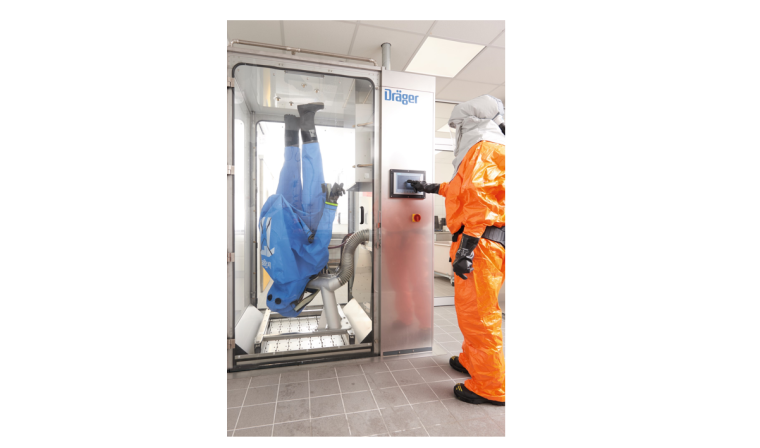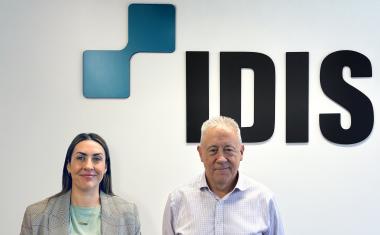Operational Hygiene of PPE in the Fire Service
The proper handling of contaminated PPE not only starts at the laundry or respiratory protection workshop. After each assignment, the equipment must be properly stored, packaged, transported and prepared. This is the only way to ensure the safety of service forces.

Fire Extinguished – Mission Accomplished?
By now everyone knows that this is not the case. The mission is just the beginning, because contaminated PPE must be removed properly and prepared for the next steps. This requires expertise and special caution as is the case with extinguishing fires. After all, chemicals and toxic substances adhering to the gear can also be inhaled or absorbed by the skin after the fire.
Operational hygiene is an issue that keeps all fire services busy to the same degree. It was only last summer that the International Agency for Research on Cancer (IARC), a body of the World Health Organisation WHO, rated fire services a cancerogenic – a further alert signal and call to action because there is plenty of backlog demand in the fields of personal equipment, the cleaning of firefighters’ protective wear and, last not least, operational hygiene.
The Proper Handling of Contaminated Equipment
At present, many fire brigades are busy working out and implementing respective operational hygiene concepts. It is important to train firefighters on this topic. Especially younger service staff and those new to the job should be informed about the right behaviour during their training and their first missions with a view to achieving a change in behaviour. Specialists provide support here in the form of training, instructions and products. The Dräger Safety Bag makes it easier for service forces to doff and pack up contaminated protective wear in a hygienic way. Uvex also offers a Decon Kit that supports firefighters in handling contaminated PPE at the operations site or the fire station.
Uvex’s AGT change-over overall is designed in such a manner that firefighters can even be identified and deployed as such after completing missions with respiratory protection systems and packing up their contaminated clothing – for instance for dismantling equipment such as hoses. And Isotemp supplies decontamination showers and tents that allow service staff to doff their gear and take a shower even on site.
Once the contaminated personal protective equipment (clothing and PPE such as respiratory protection systems, masks etc.) have been properly doffed and stored on the site after the fire was extinguished, they have to be packed air-tight. They should be transported to the laundry or respiratory equipment workshop separately from the service forces so that nobody gets in touch with the toxic substances and gases. This is the only way to avoid cross-contamination. The German Statutory Accident Insurance (DGUV) recommends pale-coloured face fabrics for PPE because these make both contaminations and cleaning outcomes more visible.
Separate clothing should be made available for service forces for returning to the fire station. If possible, hands, face and arms should be washed on site. Hazardous substances must not end up in the team quarters.
Cleaning: Done Externally or In-house?
PPE cleaning and preparation are also increasingly moving to the fore in fire service. “After all, even the safest protective wear can become unsafe with wrong and inappropriate cleaning and care”, says Tobias Thoren of Isotemp. This is why PPE manufacturers provide their products with labels that feature cleaning and care instructions. Instructions for care can also be downloaded from the companies’ websites.
Those laundering in-house have to ensure that flame protective clothing is cleaned separately from other clothing. Heat protection suits including viewing windows can be brushed or rubbed off. Chemical protection suits can be washed and disinfected by hand or machine. During machine washing and disinfection, especially the viewing windows must be protected against damage. The respective accessories needed are also made available by manufacturers. Contamination-protection gear must be cared for separately and in such a manner that its flame-retardant and anti-static properties are retained. These suits have to be impregnated afresh after each washing.
After each washing, a visual inspection should be carried out in order to check materials, seams, zipper, and insulating cuffs. Once damage is detected repairs can be done by certified partners or right by the producer, as is the case with Isotemp. As a rule, this does not even take a fortnight.
Certified Service Partners, Repairs and Spare Parts
The Chemical Protection Suit (CSA) manufacturer Tesimax recommends using washing and disinfection agents specifically developed for rough decontamination and cleaning and to either clean CSA only after a customer training/instruction, or have it cleaned by the manufacturer or certified service partners. By company accounts, this is the only way to ensure optimal cleaning outcomes and fit-for-purpose finishing while saving the equipment. “As a specialist for chemical protection suits, we offer the system across all of Germany,” says Sven Altinger of Tesimax.
Jointly Towards more Sustainability
Additionally, possibilities for the simple and hygienic preparation of PPE are developed in cooperation with customers. Protective goggles, for example, can be completely disinfected thanks to special coatings. On top of this, Uvex offers spare parts for various models such as viewing windows or headbands.
At the end of the day, it is all about the reusability of the equipment. High-quality clothing withstands up to 50 industrial washings without changing its functionality and appearance. This is in the interest of both fire services and nature. Protective equipment worn for a long time also makes a contribution to sustainability.















